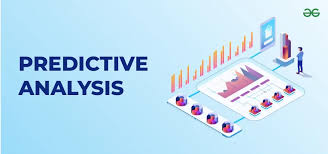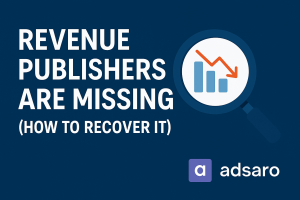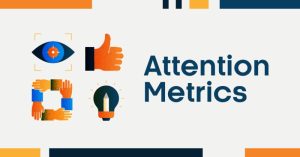In the fast-paced world of digital advertising, staying ahead of consumer behavior is crucial for success. As advertisers strive to deliver more personalized and impactful campaigns, predictive analytics has emerged as a game-changing tool. By leveraging historical data and advanced algorithms, predictive analytics helps marketers anticipate consumer actions, optimize campaigns, and drive better ROI. In this blog, we explore how predictive analytics is reshaping advertising and why it’s becoming an essential strategy for brands looking to connect with their audience more effectively.
What is Predictive Analytics?
Predictive analytics refers to the use of statistical algorithms, machine learning, and data mining techniques to analyze historical data and make predictions about future events. In advertising, this technology helps marketers forecast consumer behavior, trends, and campaign performance. It allows advertisers to anticipate what will happen next and make data-driven decisions that improve targeting, optimize campaigns, and drive better outcomes.
How Does Predictive Analytics Benefit Advertising?
Predictive analytics can transform the advertising landscape by enabling brands to deliver more personalized, relevant, and impactful campaigns. For example, Netflix uses predictive analytics to recommend content to users based on their viewing history, resulting in more personalized experiences and higher viewer engagement. Here are some of the key benefits it brings to the table:
1. Enhanced Audience Segmentation
One of the primary benefits of predictive analytics is the ability to segment audiences more accurately. By analyzing vast amounts of consumer data — such as past purchasing behavior, demographics, online interactions, and interests — predictive models can identify patterns and predict which segments are more likely to engage with an ad or make a purchase. This level of granularity enables advertisers to tailor their campaigns to specific audience segments, maximizing their chances of success.
2. Ad Personalization at Scale
Consumers today expect personalized experiences. Predictive analytics allows advertisers to meet this demand by providing insights into the types of content and ad creative that are most likely to resonate with individual users. By predicting consumer preferences and behaviors, brands can deliver highly relevant ads that engage users at a deeper level, improving both click-through rates and conversion rates.
3. Campaign Optimization and Budget Allocation
Effective campaign optimization is key to maximizing the return on advertising spend. Predictive analytics helps advertisers forecast the performance of different channels, creatives, and tactics before deploying them. By understanding which strategies are likely to perform best, advertisers can allocate their budgets more efficiently, ensuring they get the most out of every dollar spent. Additionally, predictive models can continuously adjust campaigns in real-time, ensuring that they remain optimized throughout their lifecycle.
4. Churn Prediction and Customer Retention
Customer retention is more cost-effective than acquisition. Predictive analytics helps reduce churn by analyzing customer behavior. It identifies signals when a customer is likely to leave. Advertisers can then take action to re-engage them with personalized offers, targeted messages, or loyalty programs. This helps retain high-value customers and reduce attrition.
5. Dynamic Pricing and Real-Time Bidding
In the world of programmatic advertising, real-time bidding (RTB) is crucial. Predictive analytics enables dynamic pricing strategies by forecasting demand for specific ad inventory. With real-time predictions of how much users are willing to pay for ads, advertisers can optimize their bids in programmatic auctions, ensuring that they win the right inventory at the right price. This not only improves the efficiency of ad spending but also helps maximize the chances of reaching the right audience at the right time.
The Challenges of Predictive Analytics in Advertising
While the potential benefits of predictive analytics are undeniable, there are also challenges to consider:
1. Data Quality and Accuracy
The effectiveness of predictive models is largely dependent on the quality of the data being used. If the data is inaccurate, incomplete, or outdated, the predictions generated by the model will be flawed. Advertisers need to ensure they are collecting high-quality data from reliable sources and continuously updating their models to maintain accuracy.
2. Privacy and Data Security Concerns
Predictive analytics relies on large amounts of consumer data, raising privacy concerns. With regulations like GDPR, advertisers must comply with privacy laws. Consumers are more aware of how their data is used, so building trust and being transparent is crucial.
3. Complexity of Implementation
Implementing predictive analytics requires expertise in data science, machine learning, and statistical modeling. While the technology is becoming more accessible, many organizations may still struggle to build and maintain predictive models without the necessary skill sets. For smaller advertisers, this can pose a barrier to entry, limiting the widespread adoption of predictive analytics in the industry.
The Future of Predictive Analytics in Advertising
Despite the challenges, the future of predictive analytics in advertising looks promising. As AI and machine learning continue to evolve, predictive models will become more sophisticated and accurate, allowing advertisers to anticipate trends and consumer behaviors with greater precision. The rise of big data will also provide marketers with an even broader pool of information to draw insights from, further enhancing the power of predictive analytics.
As the industry matures, predictive analytics will become an integral part of the advertising ecosystem. Brands that embrace this technology will gain a competitive edge, allowing them to deliver more personalized, effective campaigns that drive better results. In turn, consumers will benefit from more relevant and engaging ads that cater to their preferences and needs.
Conclusion
Predictive analytics is undeniably transforming the advertising landscape, enabling brands to make smarter decisions, optimize campaigns, and create more personalized experiences for their audience. As technology continues to evolve, the accuracy and potential of predictive models will only grow, offering brands a competitive edge in the crowded digital space. However, balancing innovation with privacy and data security remains essential. Embracing predictive analytics is not just about staying ahead of trends, but about building stronger, more meaningful connections with consumers while driving long-term success.








Leave a Reply